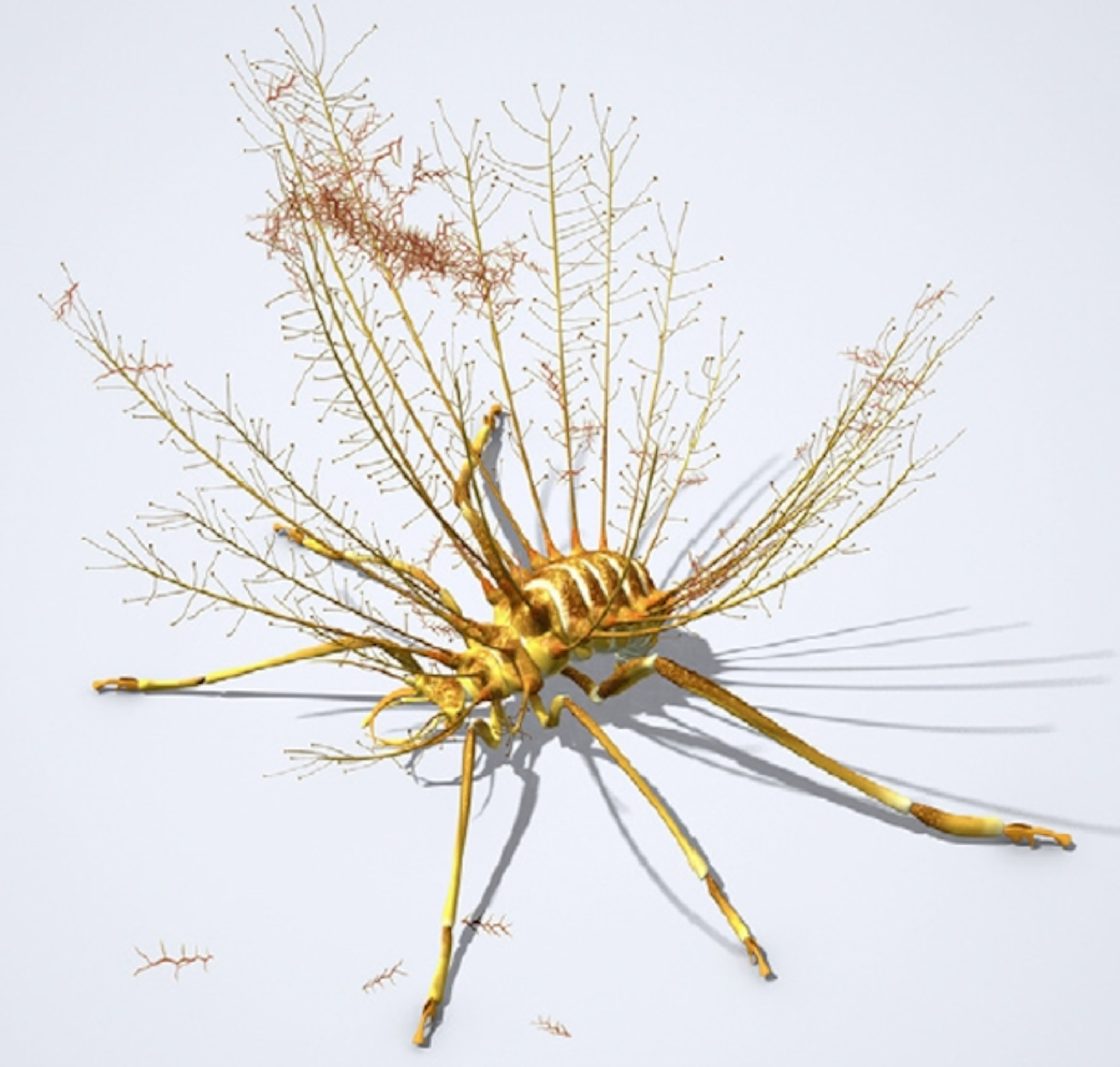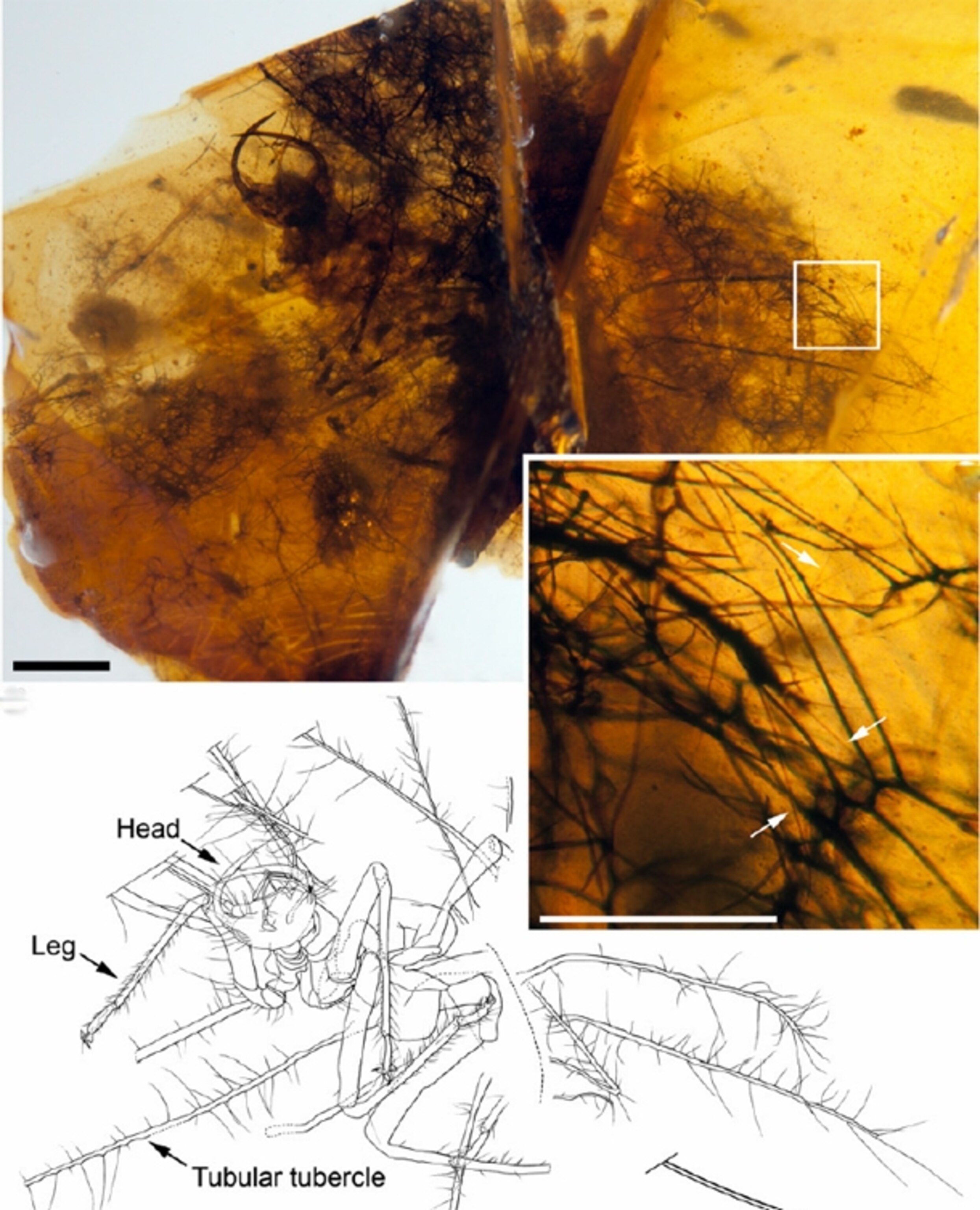
Fossil Insect Hid By Carrying a Basket of Trash

If you travelled back to Spain, during the Cretaceous period, you might see an insect so bizarre that you’d think you were hallucinating. That’s certainly what Ricardo Pérez-de la Fuente thought when he found the creature entombed in amber in 2008.
The fossilised insect of the larva of a lacewing. Around 1,200 species of lacewings still exist, and their larvae are voracious predators of aphids and other small bugs. They also attach bits of garbage to tangled bristles jutting from their backs, including plant fibres, bits of bark and leaf, algae and moss, snail shells, and even the corpses of their victims. Dressed as walking trash, the larvae camouflage themselves from predators like wasps or cannibalistic lacewings. And even if they are found, the coats of detritus act as physical shields.
We now know that this strategy is an ancient one, because the lacewing in De la Fuente’s amber nugget—which is 110 million years old—also used it. It’s barely a centimetre long, and has the same long legs, sickle-shaped jaws, and trash-carrying structures of modern lacewing larvae. But it took camouflage to even more elaborate extremes. Rather than simple bristles, it had a few dozen extremely long tubes, longer even than the larva’s own body. Each one has smaller trumpet-shaped fibres branching off from it, forming a large basket for carrying trash.
De la Fuente called it Hallucinochrysa diogenesi, a name that is both evocative and cheekily descriptive. The first part comes from the Latin “hallucinatus” and references “the bizarreness of the insect”. The second comes from Diogenes the Greek philosopher, whose name is associated with a disorder where people compulsively hoard trash.
Hallucinochrysa presumably carried trash for the same defensive advantages as its modern relatives. But why carry so much? De la Fuente speculates that it might have needed to defend itself against a predator with a very long, piercing snout or sting, as many bugs and wasps do. This hypothesis may not be correct, but there’s a lovely feel about it—after all, when Darwin saw an orchid with a long tube, he correctly predicted the existence of a moth with a long tongue that pollinated it.

At the very least, we know that Hallucinochrysa hoarded trash because the larva in the amber still has thick bundles of fern hairs trapped in its bristles. De la Fuente could even tell which group of ferns the hairs came from—it’s a group that specialises in colonising land that has been recently scorched by fire. This supports the idea that Spain’s Cretaceous forests were swept by seasonal fires. Ironically, those same fires would have stimulated the trees to produce more resin, which would have trapped many an insect in liquid tombs that eventually fossilised into amber.
Hallucinochrysa may have blended into the forest of its time, but its beautiful remains tell us a surprising amount about what those forests were like. And the forests, in turn, set up the perfect conditions for Hallucinochrysa’s body to endure to this day.
Note: This is one of two wonderful stories about prehistoric insect camouflage in as many weeks. For the other one, about a hangingfly that mimicked a tree, head over to Brian Switek’s blog.
Reference: De La Fuente, Delcios, Penalver, Speranza, Wierzchos, Ascaso & Engel. 2012. Early evolution and ecology of camouflage in insects. PNAS http://dx.doi.org/10.1073/pnas.1213775110
Images: Reconstruction by J.A.Penas, and others from de la Fuente et al.
